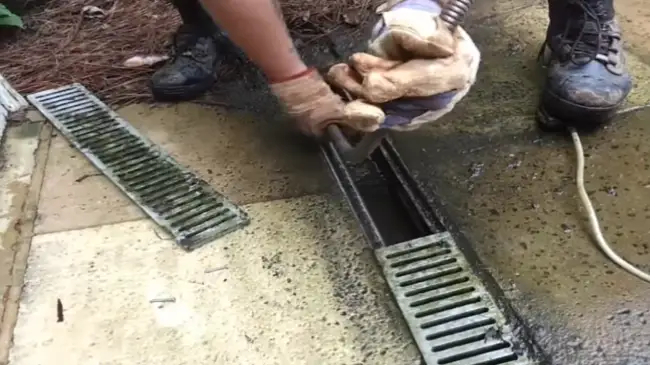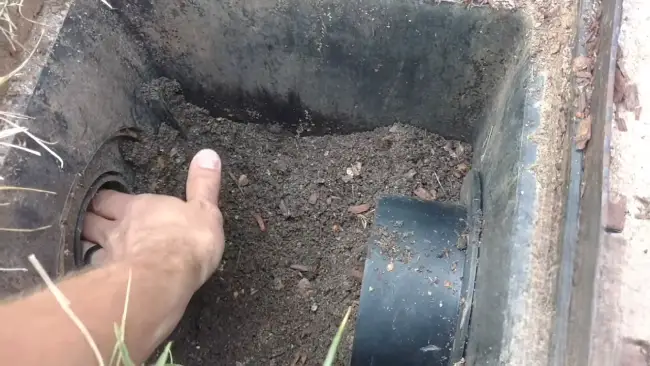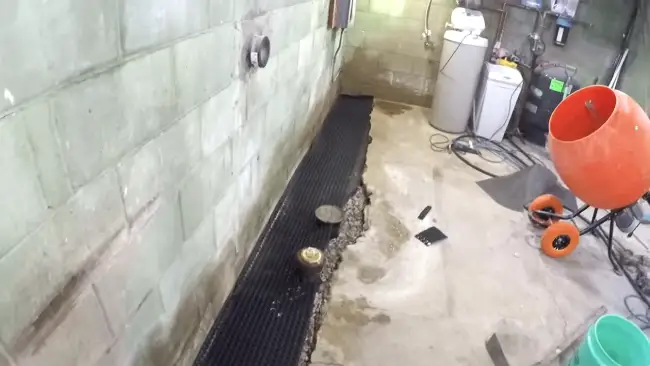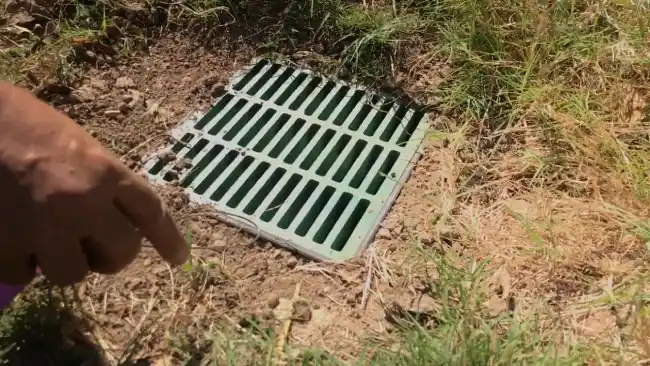Last Updated on August 28, 2023
Basements are a popular area for families to gather, but they are also prone to water-related issues that can lead to long-lasting damage without proper care. One of the best methods is to install a French drain to prevent flooding in the basement.
These underground pipes have a perforated outer wall that helps divert water away from the home’s foundation and into a safe area. Keeping these drains clean periodically is crucial so they function correctly and prevent water damage.
To clean a French drain, you’ll need an Electric Sewer Snake. The Process involves uncovering the entrance, feeding the cable, handling it, and removing the cable for significant blockages.
You can maintain your French drain properly by utilizing the comprehensive instructions outlined in this post.
How to Clean French Drain in Basement: Step By Step

Step 1: Choose and Prepare the Electric Sewer Snake
Step 2: Uncover the Entrance and Feed the Cable
Step 3: Continue Feeding the Cable and Handling
Step 4: Remove the Cable for Large Clogs
Step 5: Repeat the Process for Complete Clearing
Here are the step-by-step instructions that can be followed to clean your French basement drain effectively:
Step 1: Choose and Prepare the Electric Sewer Snake
Selecting the appropriate electric sewer snake with the correct cable length is essential for clearing a clogged drain successfully. The most suitable option is an auger with a 3⁄4 inch (1.9 cm) cable and either a 50-foot or 100-foot cable. Choose one based on the length of the French drain.
It is important to wear thick gloves while operating this machinery to protect your hands from potential injury. These precautions will ensure that the cleaning process runs smoothly and efficiently.
Step 2: Uncover the Entrance and Feed the Cable
Locate and uncover the drain entrance before you can access the line requiring attention. Any connections to a gutter downspout must detach first. Slowly feed an auger’s cable into the drain and use a gentle back-and-forth motion to navigate any bends in the pipe.
Step 3: Continue Feeding the Cable and Handling
To continue feeding the cable, you should slowly feed it through the drain, following its path and using a firm grip on the cable. For thorough cleaning, you must stop periodically to check that the cable reaches all parts of the drain.
Maintaining vigilance throughout this process will help ensure a successful French drain cleaning in a basement.
Step 4: Remove the Cable for Large Clogs
When the cable encounters an obstruction too large to clear, you must take the necessary steps to remove it safely. First, disengage the motor and use the reverse switch on the snake motor if needed. This will help to slowly pull out any debris that may be stuck in the drain.
Then, use a wet rag to wipe down the cable as it recoils, which will help remove any build-up that may have occurred. To finish, turn off the machine and manually remove any remaining debris (e.g., tree roots, leaves) from the cutter before storing it.
Step 5: Repeat the Process for Complete Clearing
Feed the cable into the drain until all obstructions are gone. Repeating this process two or three times is typically necessary to completely unclog a French drain.
Step 6: Hose Out the Drain
Hose out the drain to flush out any remaining debris effectively. After snaking with the auger, insert a garden hose into the drain and turn it on. Allow the water to run through for approximately five minutes or until it runs clear.
Notably, employing a pressure washer can provide an even more thorough cleaning. For optimal results, the garden hose and augur can be inserted simultaneously into the drain for a final snaking before flushing out any remaining debris.
How to Keep a French Drain From Clogging?

Cleaning French drains properly prevents blockages and disruptions. Regular maintenance is necessary, and thoroughly cleaning the entire system at least once per year is advisable.
ONE: Do a Regular French Drain Cleaning
Performing periodic maintenance on the French drain in the basement is necessary to prevent clogging. Weekly use of garden rakes to remove surface debris is a good idea. Aside from that, following any storm or construction activity in the vicinity, it is crucial to clean the area thoroughly.
You should also clean the louvers inside the drain and remove any debris from each louver slot if the drain has them.
TWO: Deep Clean the French Drain Yearly
Yearly deep cleaning of the drainage system is essential to maintain long-term functionality and prevent blockage. Inspecting French drains at least once a year, preferably during the summer or vacation period, is recommended.
To ensure the best results, performing when the weather is favorable, with no snow or excessive rain, is ideal. Try to finish this project before commencing any other ventures in the nearby vicinity.
THREE: Get a Professional Inspection
Periodic inspections of the drainage system by a professional can help detect potential problems before they cause damage. Expert drain specialists can quickly and accurately identify any issues that could potentially lead to extensive repairs or replacements.
They can provide cleaning services as needed, especially for French drains in basements where dirt and debris can easily accumulate over time. Professional inspections can also uncover any signs of deterioration or other problems that may not be visible to the untrained eye.
What is the Lifespan of a French Drain?

The longevity of a French drain can vary depending on the maintenance it receives. Generally, these drains have an expected lifespan of up to 10 years, but proper maintenance can last for three or four decades.
Over time sand or silt may infiltrate the pipe and cause it to become clogged and ultimately useless. Routine inspections are imperative to extending the item’s lifespan and addressing any maintenance required quickly.
Are French drains susceptible to mold growth?
Regular maintenance of a French drain is essential to prevent the buildup of mold, which can lead to serious structural damage and other costly issues. If not properly maintained, debris can accumulate in the French drain, creating an environment hospitable for mold growth.
Aside from this, if too much water runs through it or the pipe becomes clogged. This can cause water to back up into the basement, causing standing water where mold grows. To avoid these issues, regularly check on your French drain system and clean out any debris from inside the pipes.
Doing so will help ensure your property stays dry and free from mold growth.
Can you connect a French drain to a city storm drain?
You can connect a French drain to a municipal storm drain. To do so, you must first check if the catch basin has a sleeve to link your French drain. If there is no sleeve, you will need to core drill into the basin and install a pipe. Hiring a professional is recommended for this task.
After establishing a connection point, adapters may be needed to join the French drain and the inlet pipe. By connecting your French drainage system to the storm drain, you can send storm runoff directly into the city sewer system.
Is putting rocks on the bottom of the French drain a good idea?
Adding a layer of clean, round stones to the bottom of a French drain helps increase its permeability and drainage, reducing the chances of clogging. Due to its nature, such stone provides good flow through its aggregate without becoming blocked.
Any properly sized natural round stone should be fine for creating an effective drainage system. Ideally, 1-1/2′ clean round rocks are recommended. Over time, this layer of rock will help maintain the effectiveness and clarity of your French drain if installed and maintained properly.
Maintaining French Drains: Essential for Optimal Performance

French drains are a reliable preventive measure against water-related damages and flooding, making them an excellent choice for any property. It is vital to remember that these drains require maintenance to ensure their effective performance.
Cleaning them consistently is the easiest and most important way to keep French drains working. Doing this can reduce the likelihood of further issues with the system, making your basement and property dry and comfortable.
Now equipped with proper French drain maintenance knowledge, ensure your drainage system is maintained to prevent water damage.

